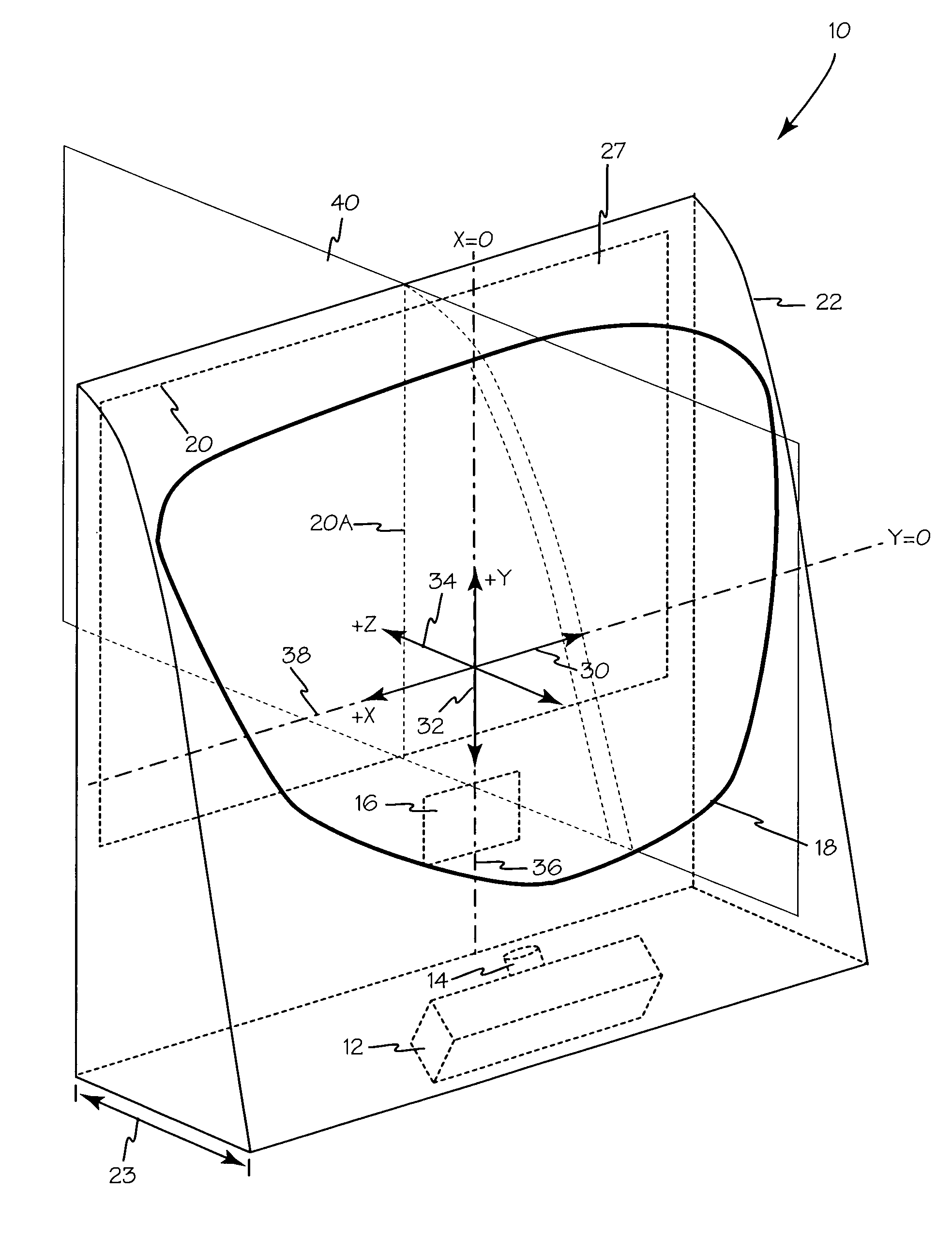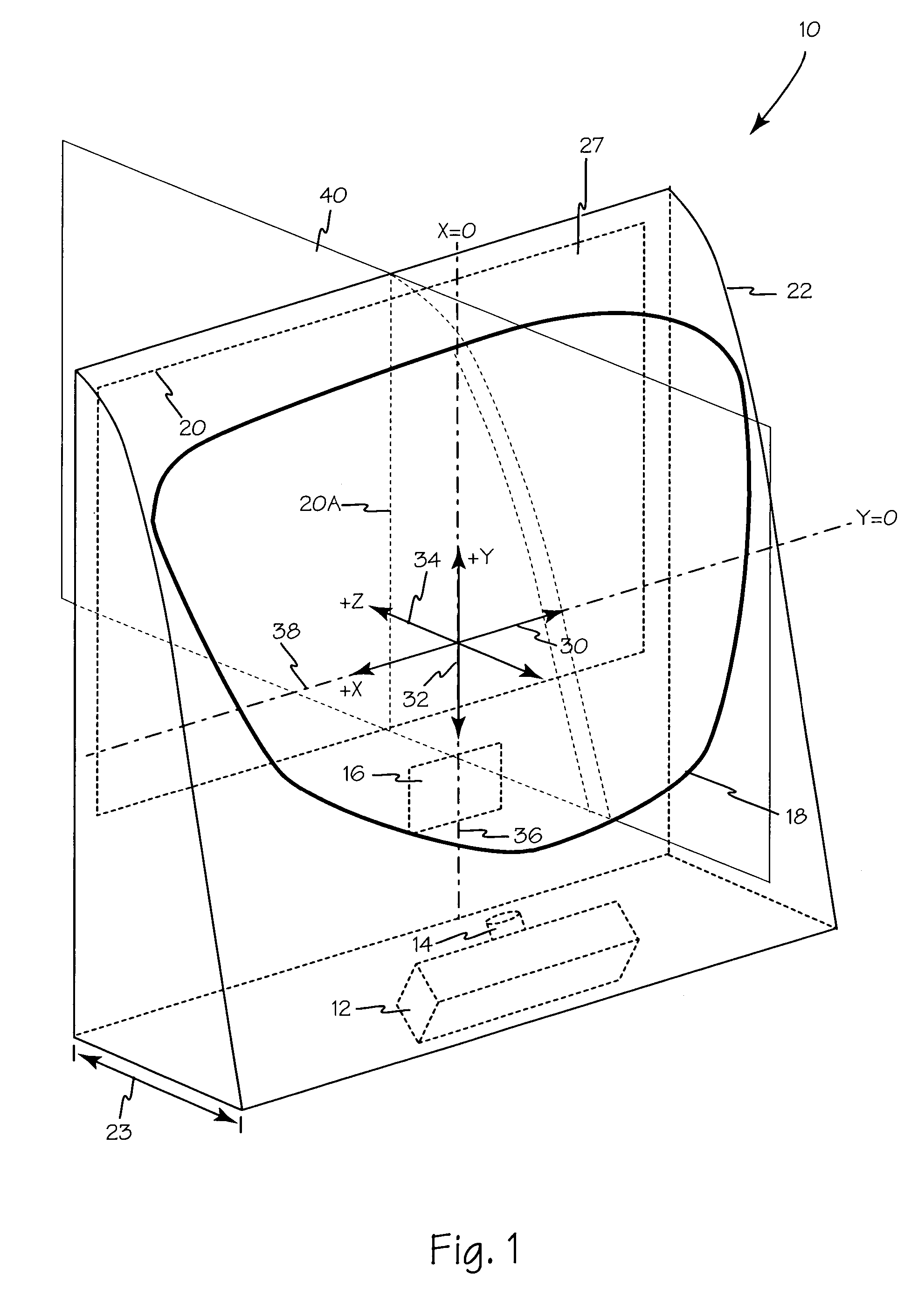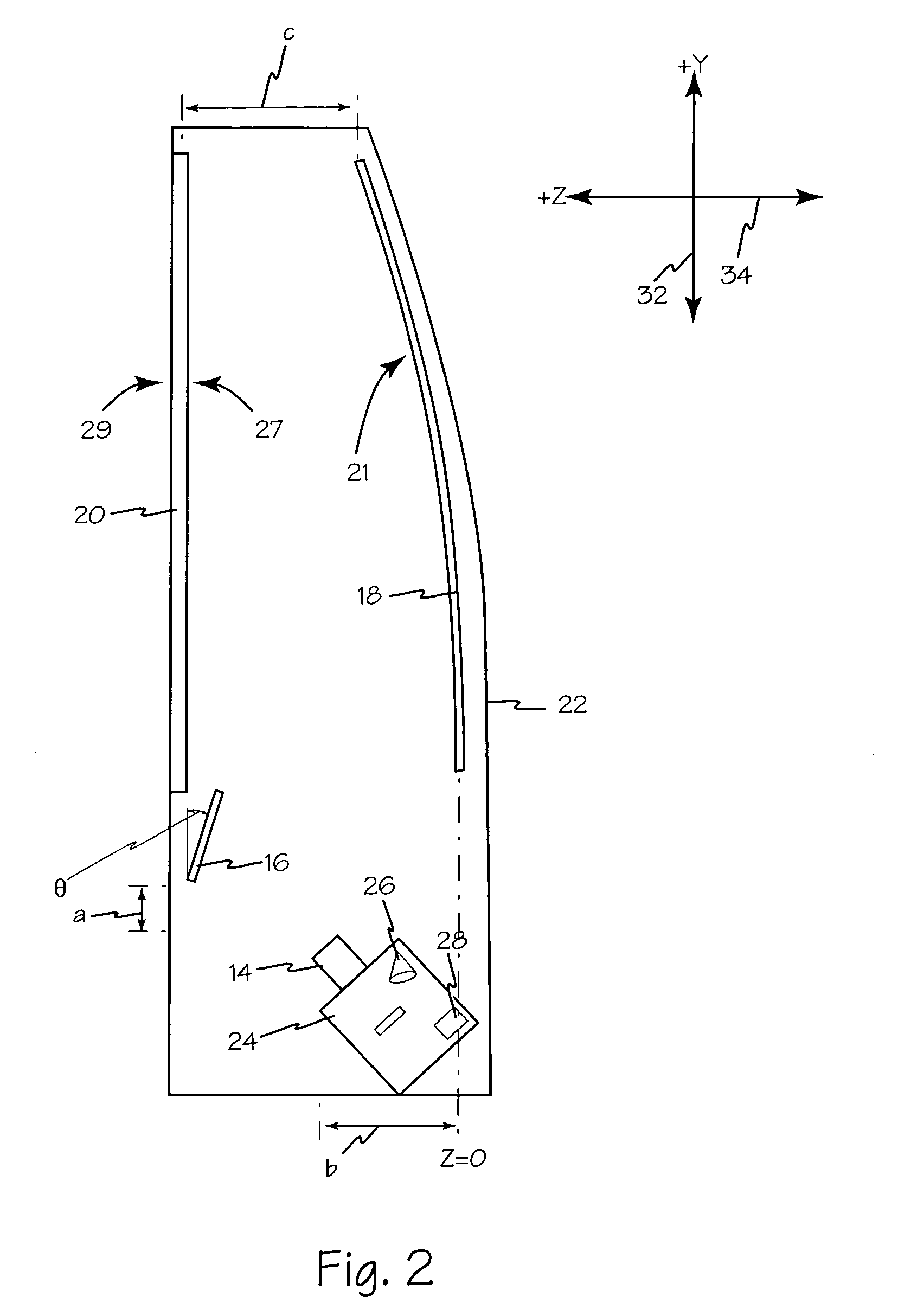Complex mirror projection display
a technology of complex mirrors and projection displays, applied in the field of optics, can solve the problems of limited depth a rear projection monitor may achieve, expensive and complicated lenses, and optical limitations, and achieve the effects of low cost, shallow cabinet design, and high picture quality
- Summary
- Abstract
- Description
- Claims
- Application Information
AI Technical Summary
Benefits of technology
Problems solved by technology
Method used
Image
Examples
Embodiment Construction
[0023]Referring to FIGS. 1 and 2 rear projection display 10 is illustrated according to the present disclosure. Rear projection monitor 10 includes projector 12, projection optics 14, first mirror 16, complex mirror 18, and screen 20. Rear projection monitor 10 may be of the thin type in which depth 23 is less than twelve inches. X axis 30, Y axis 32, and Z axis 34 are illustrated for reference purposes.
[0024]Projection optics 14, first mirror 16, complex mirror 18, and screen 20 are positioned such that they are symmetrical with respect to Y-Z plane 40. Y-Z plane 40 is perpendicular to screen 20 and bisects the screen along the screen's vertical centerline 20A.
[0025]Projector 12 is a micro display based projector containing an imager 24, light source 26, and electronics 28. Imager 24 may be any suitable device or combination of devices such as liquid crystal on silicon (LCoS), a digital micro mirror devices (DMD) imager, or the like using one or more such imaging devices. For the p...
PUM
 Login to View More
Login to View More Abstract
Description
Claims
Application Information
 Login to View More
Login to View More - R&D
- Intellectual Property
- Life Sciences
- Materials
- Tech Scout
- Unparalleled Data Quality
- Higher Quality Content
- 60% Fewer Hallucinations
Browse by: Latest US Patents, China's latest patents, Technical Efficacy Thesaurus, Application Domain, Technology Topic, Popular Technical Reports.
© 2025 PatSnap. All rights reserved.Legal|Privacy policy|Modern Slavery Act Transparency Statement|Sitemap|About US| Contact US: help@patsnap.com



